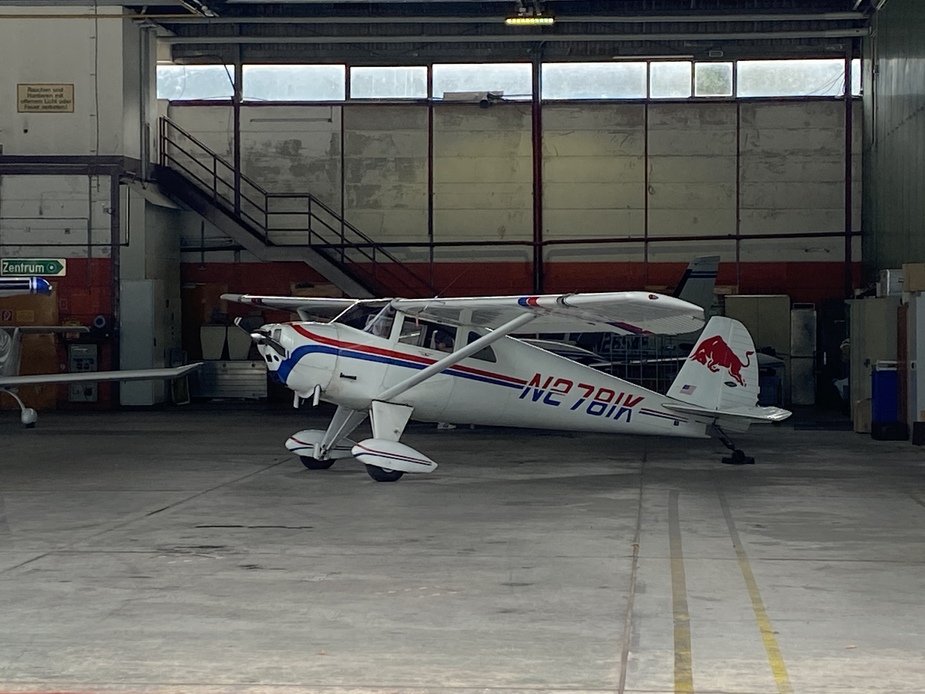In France there is a category for collection/classic aircraft (I keep forgetting the designation) Jodels normally come under a different category CDNR which are for what are called “orphelins”.
Owners and groups are allowed to do the maintenance on both categories. In the collectors category they can also build parts to replace those no longer available.
Jodels can be used for initial training here but in which case they must be maintained by approved personnel.
The association or one of the associations which deal with these is the RSA. In order to get or renew the certificat de navigabilité one either takes the aircraft to one of the RSA engineers (or they might come to you) or on can go to a branch of the DGAC/DSAC called OSAC.
I don’t know how well any of them sell outside France but inside they seem to sell quite easily.
This is what people do in Germany and (it seems) Austria when they’d like to operate a Luscombe or similar without hassles. Photo taken at Innsbruck Airport on 14 September.

Taking a Luscombe off N-register when importing it to e.g. the UK was not IMHO the wisest move made by those who did it. Maintenance of a simple certified plane on N-register is easy, commercial use other attributes of certification are maintained and the plane can be flown and sold anywhere.
Silvaire wrote:
Taking a Luscombe off N-register when importing it to e.g. the UK was not IMHO the wisest move made by those who did it. Maintenance of a simple certified plane on N-register is easy, commercial use other attributes of certification are maintained and the plane can be flown and sold anywhere.
I would agree there. These systems for permits to fly are favoured for their minimum cost approach and are very political in the way they operate. You read the magazines they produce, and someone is giving instructions for making a homemade cable tensiometer and you think to yourself why on gods green earth would you bother fabricating something that is commercially available?
I would much prefer to be dealing with an A&P/IA who can sign for the aircraft rather than play the “pass the parcel” approach where you have up to 5 actors (Owner/Maintainer/Inspector/Organisation/Competent Authority) in the process but nobody is actually able to release the aircraft to service. I’ll try to steer them down the FAA route, which is easier now we have another UK-based DAR.
which is easier now we have another UK-based DAR.
Coud you post his details, William – or at least PM me? Thanks 
I know some guys who have had Arthur Ockwell for DAR service in the UK and were very pleased with the day’s work, and the rates charged.
for my FAA work
[email protected]
But if you would like to call no problem I live just outside Preston
07983996918
I am led to believe we have a DAR near here.
That is if I am understanding what a DAR does and not confusing it with some other acronym.
He is a Brit and comes to the local maintenance facility to sign off on the N registered aircraft after maintenance.
The sign off on CDNR, CDNK, classic collectors aircraft etc can be done by whoever it is that does the maintenance eg owner,builder, part 66 engineer etc.
The CDN is something that is done with the RSA or OSAC every 3 years AFAICT after the initial registration.
Unfortunately a G reg Luscombe has a full CDN and is therefore an EASA aircraft not one that comes under national regs for CDNR. So the easy way of going from G to F-P is not possible.
And suddenly a whole load of admin becomes involved.
Perhaps Jo with the Lancair could fill in the gaps.
A DAR is required in the FAA system only in very limited circumstances, a typical example being to import a foreign registered aircraft to N-register. A DAR has an ongoing relationship with FAA, as opposed to just holding an FAA certificate like a pilot or mechanic.
Annual inspections are signed off by an A&P mechanic with inspection authorization (IA), maintenance is performed and/or supervised (including logbook entries) by an A&P, no IA required.
There are EASA Permit to Fly certificates. Bolkow Juniors are EASA aircraft but my one was imported as a wreck and the CAA only allowed it on an LAA Permit. When the UK joined EASA it went on an EASA Permit with NO changes to its maintenance. Then when the UK left EASA 11 months on a special CAA dispensation, and back to an LAA Permit.
I assume the EASA Permi would have been valid in all Easaland
To try to answer the original question if exporting to France, there are several categories of aeroplane it could go onto.
The RSA have a page about acquiring aircraft, where I’ve translated:
- it is not possible to import a foreign aircraft of amateur construction, or kit, to put it on the French register;
– it is not possible to import a collection aircraft, or some orphans under certain conditions (contact us)
It says largely the same on the DGAC website
Officially, only 1, and maybe 2 and 3 are possible. There is anecdotal evidence that more is possible, but I don’t know the system. The RSA would be a good first port of call.